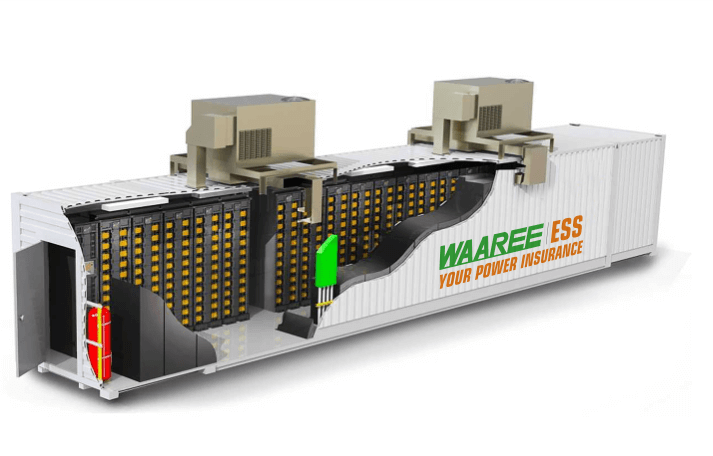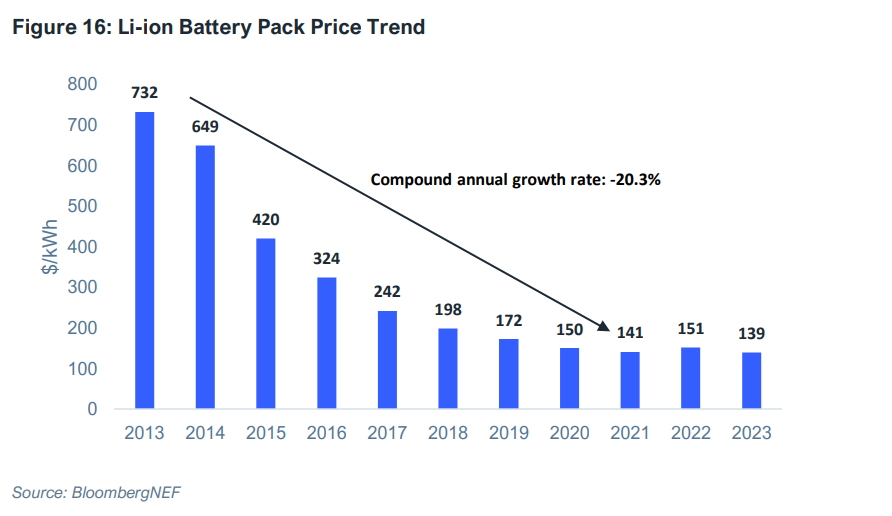India’s energy landscape is undergoing a significant transition, with a growing emphasis on renewable energy sources like solar and wind power. However, the intermittent nature of these resources poses challenges in balancing supply and demand, especially during periods of peak demand or when weather conditions are unfavorable for renewable generation. This is where Battery Energy Storage Systems (BESS) come into play, offering a promising solution to address India’s energy challenges and paving the way for a cleaner, more sustainable future.

What is BESS?
Battery Energy Storage Systems (BESS) are large-scale energy storage solutions that store excess electricity generated from renewable sources like solar and wind.
These systems act as grid balancers, storing energy when supply exceeds demand and releasing it back into the grid when demand is high or when renewable generation is low.

At the core of BESS are lithium-ion batteries, similar to those found in smartphones and electric vehicles, but on a much larger scale. These batteries are chosen for their high energy density, long lifespan, and fast charging capabilities. The declining prices of lithium battery packs have made BESS increasingly cost-effective, making them a viable option for grid-scale energy storage.

Why Does India Need BESS?
- Balancing Supply and Demand: India’s growing reliance on renewable energy sources, particularly solar and wind, presents challenges in matching supply with demand. BESS can store excess energy generated during periods of low demand and release it back into the grid when demand peaks, ensuring a consistent and reliable power supply.
- Enhancing Grid Flexibility and Reliability: BESS provides fast response times to sudden changes in supply or demand, helping to balance the grid and integrate more renewable energy sources. This enhances grid flexibility and reliability, reducing the risk of blackouts or power disruptions.
- Facilitating the Transition to Renewable Energy: By enabling the effective integration of renewable energy sources into the grid, BESS supports India’s transition towards a cleaner and more sustainable energy future. It allows for a higher penetration of renewable energy sources while maintaining grid stability.
- Cost Savings and Revenue Generation: With the implementation of smart grids and dynamic pricing, BESS developers can strategically store energy when prices are low and sell it back to the grid when prices are high during peak demand periods, generating revenue and optimizing energy costs.
India’s BESS Targets and Opportunities
India has set ambitious targets for BESS deployment, aiming to achieve an installed capacity of 42 GW (208 GWh) by 2030. This represents a staggering Compound Annual Growth Rate (CAGR) of approximately 105% from the current installed capacity of around 35 MW as of March 2023.
To meet this target, India needs to install around 6 GW of BESS every year for the next seven years, presenting immense opportunities for companies involved in the BESS industry. The declining cost of BESS, expected to be around ₹5-6 crore per MW between 2023 and 2026, further enhances the economic viability of these systems.
As India continues its transition towards a more sustainable energy future, BESS will play a crucial role in ensuring grid stability, enabling the integration of renewable energy sources, and supporting the country’s efforts to achieve its ambitious climate goals.


